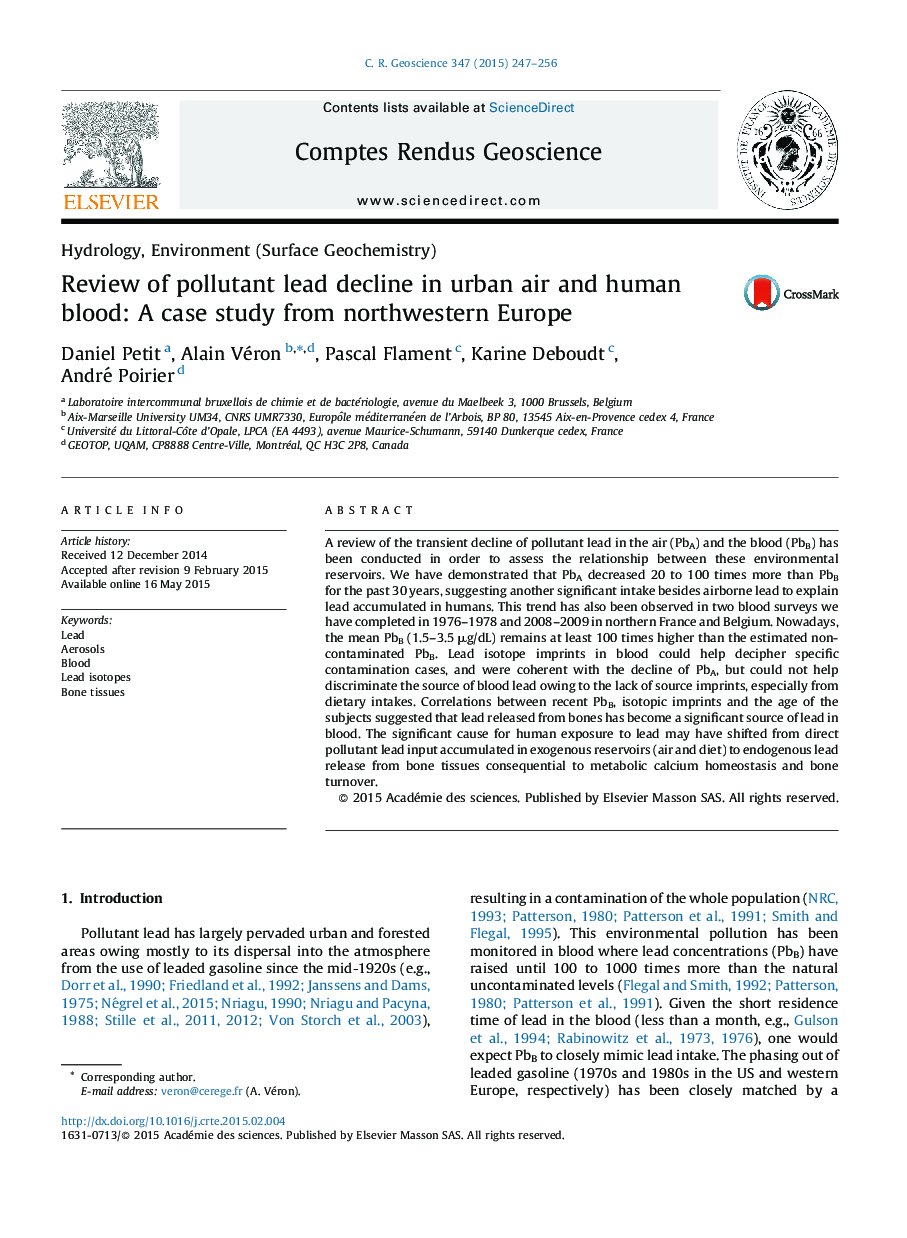| Article ID | Journal | Published Year | Pages | File Type |
|---|---|---|---|---|
| 4462133 | Comptes Rendus Geoscience | 2015 | 10 Pages |
A review of the transient decline of pollutant lead in the air (PbA) and the blood (PbB) has been conducted in order to assess the relationship between these environmental reservoirs. We have demonstrated that PbA decreased 20 to 100 times more than PbB for the past 30 years, suggesting another significant intake besides airborne lead to explain lead accumulated in humans. This trend has also been observed in two blood surveys we have completed in 1976–1978 and 2008–2009 in northern France and Belgium. Nowadays, the mean PbB (1.5–3.5 μg/dL) remains at least 100 times higher than the estimated non-contaminated PbB. Lead isotope imprints in blood could help decipher specific contamination cases, and were coherent with the decline of PbA, but could not help discriminate the source of blood lead owing to the lack of source imprints, especially from dietary intakes. Correlations between recent PbB, isotopic imprints and the age of the subjects suggested that lead released from bones has become a significant source of lead in blood. The significant cause for human exposure to lead may have shifted from direct pollutant lead input accumulated in exogenous reservoirs (air and diet) to endogenous lead release from bone tissues consequential to metabolic calcium homeostasis and bone turnover.
